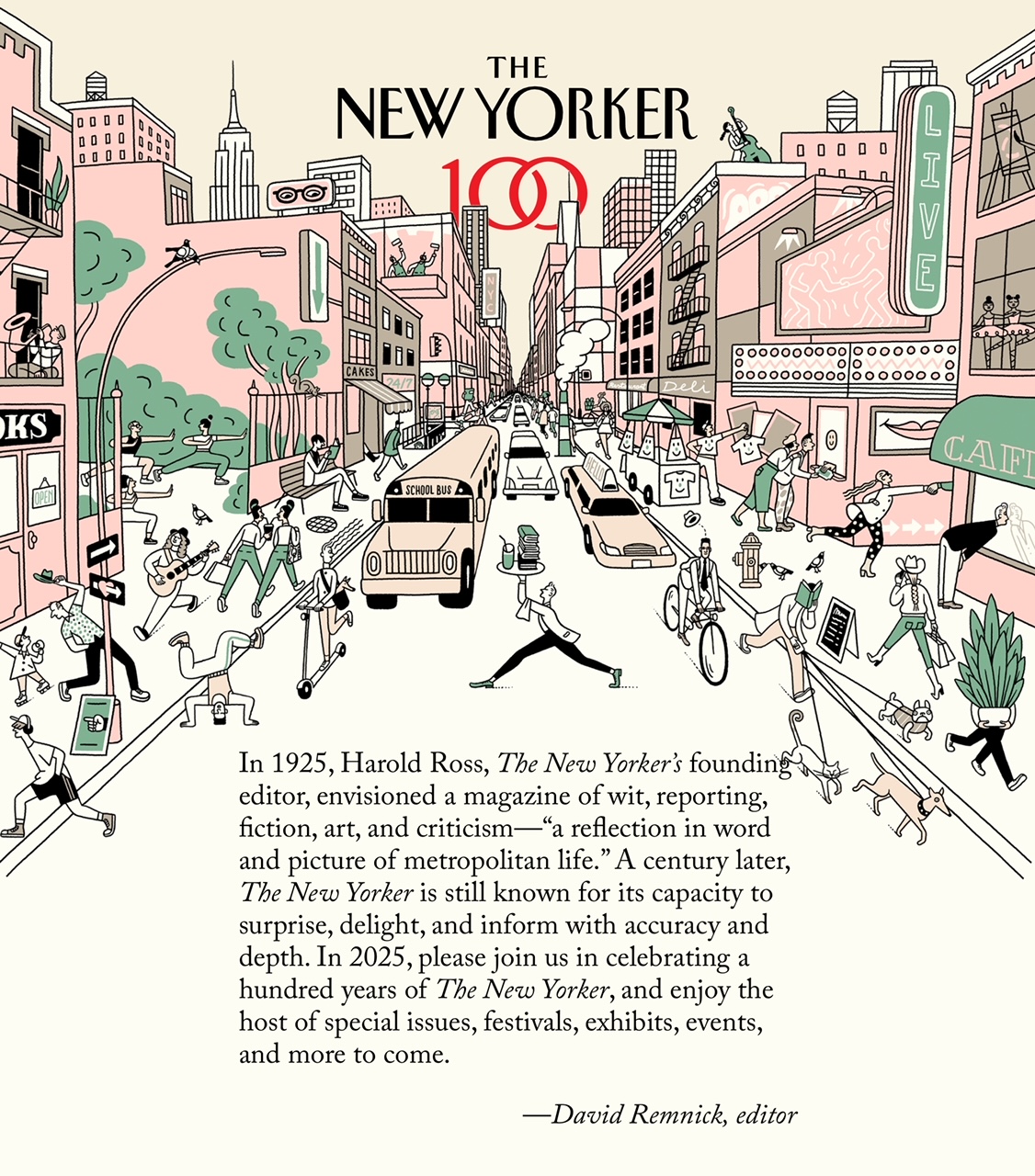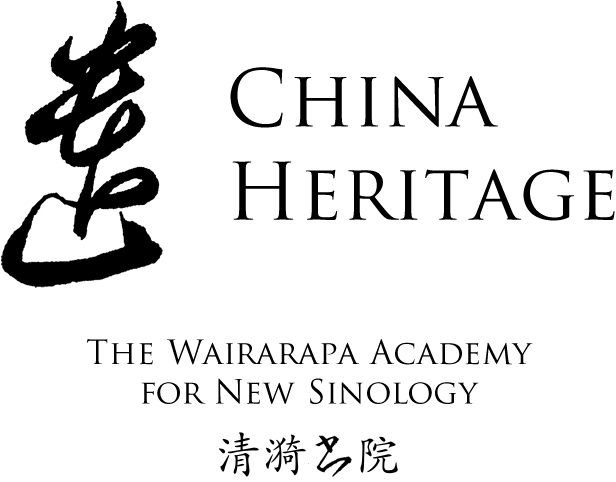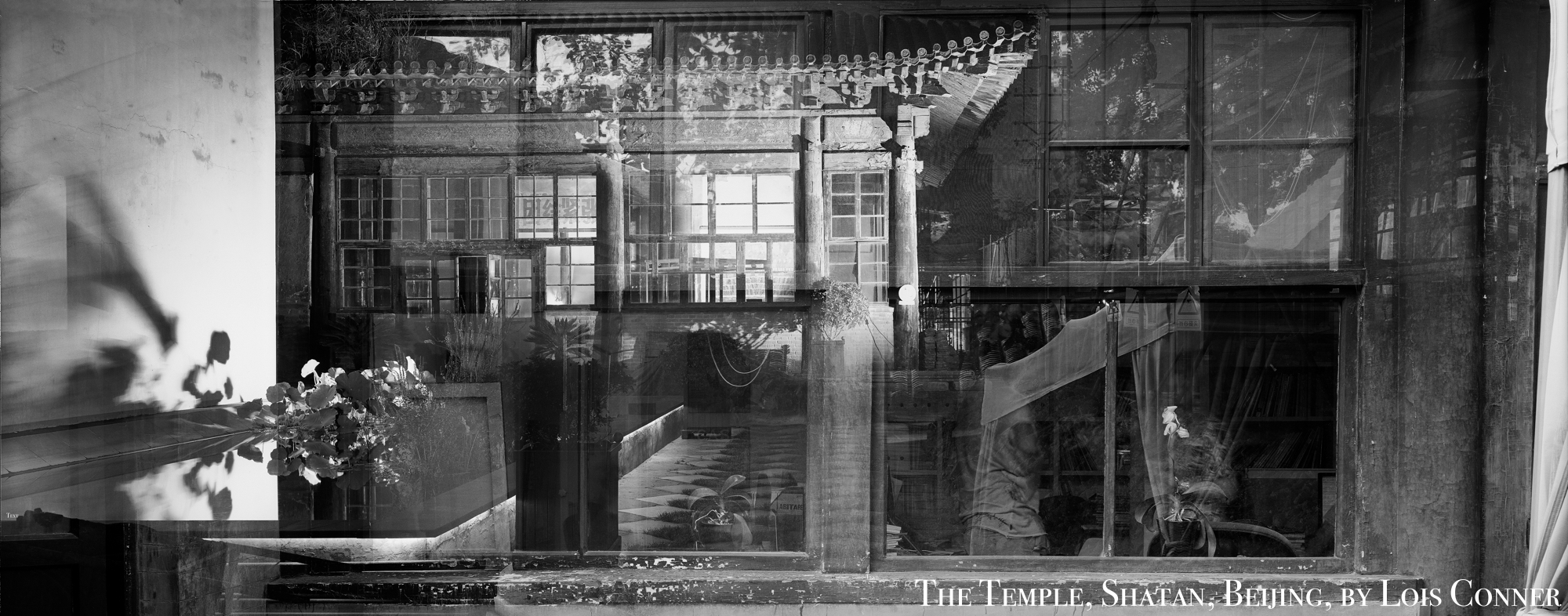Celebrating New Sinology
The 17th February 2025 marks the centenary of The New Yorker. Over the years, I have made modest China-related contributions to that magazine’s reporting on China and the writers I have engaged with include Evan Osnos, Ian Buruma, Jiayang Fan and Chang Che. Peter Hessler has been the cause of a far less salubrious interaction, but that is not a topic suited to a day of celebration.
China Heritage has also published the work of Jianying Zha, a New Yorker-Beijinger famous for numerous contributions to The New Yorker. For Zha in China Heritage, see:
- China’s Heart of Darkness — Prince Han Fei & Chairman Xi Jinping;
- Adieu, China! — Jianying Zha’s Long Farewell; and,
- On the End of an Error — Day Ten of Jianying Zha & Katō Yoshikazu’s New Decameron
— Geremie R. Barmé
Editor, China Heritage
17 February 2025
***

The 100th
Anniversary Issue
Jill Lepore on the letters of New Yorker editors and writers, Adam Gopnik on Ernest Hemingway and Lillian Ross, and David Remnick on the magazine from 1925 to today.
Plus: Lawrence Wright on the bond between women on death row in Texas and an order of nuns, Kathryn Schulz on learning to love the spider, Burkhard Bilgeron marching bands, Dhruv Khullar on interplanetary travel, Kelefa Sanneh on Mike White, and more.
***
The New Yorker has played a not insignificant role in my life. As my interest in traditional Chinese thought and contemporary politics burgeoned in my teenage years, my grandmother, who spent six months annually with ‘the twins’ Else and Katharina (Kaeta) Schwab — her cousins who lived in Forest Hills in Queens, introduced me to the cartoons that were, and remain, a feature of that weekly magazine.
Later, when I was pursuing my interest in the kind of ‘casual essay’ 小品文 championed by Lin Yutang 林語堂 and other non-aligned writers in Republican China, I learned that Lin had modelled two of the journals he published in Shanghai on The New Yorker, even then known in Chinese as《紐約客》Niǔyuē kè. The Analects 《論語》and Universal Variety《宇宙風》, both fortnightly magazines launched by Lin, enjoyed considerable commercial success, although their anti-politics was the object of considerable po-faced ideological rancour, the effects of which would be felt in China’s literary world well into the 1990s.
In 1937, The New Yorker spoke to Lin Yutang, who was by then living in Manhattan, for ‘Talk of the Town’. It was just before his book The Importance of Living was published to considerable acclaim (a copy even found its way into my mother’s library and it was the first China-related book that I read in my teens).
In ‘Talk’, Lin described his old magazine The Analects and spoke about The China Critic, founded in 1928, a prominent Chinese owned and edited English-language weekly. He jokingly referred to himself as a ‘Chinese hustler’ and his levity inspired Cornelia Otis Skinner to write a spirituous sketch entitled<a “href=”https://www.newyorker.com/magazine/1938/06/04/the-importance-of-cocktails-or-oil-from-the-lamps-of-lin-yutang”>The Importance of Cocktails; Or Oil From the Lamps of Lin Yutang, which appeared in The New Yorker in May 1938.
Jonathan Hutt, a doctoral scholar who studied jazz-age Shanghai and its literary demimonde with me in the 1990s, delved into another 1930s’ New York-Shanghai connection, one between Emily ‘Mickey’ Hahn — ‘American journalist and good-time girl’ — and Sinmay Zau (Shao Xunmei 邵洵美). The two shared a taste for opium and, for a time, they enjoyed a romantic liaison. In a series of sketches published in The New Yorker, Hahn transformed Zau, a noted literary celebrity, publisher and urban sophisticate who was despised by Communists, into ‘Mr. Pan’. Hahn’s burlesque-like oriental bon vivant immediately caught the fancy of American readers. (See: Jonathan Hutt, Monstre Sacré: The Decadent World of Sinmay Zau 邵洵美, China Heritage Quarterly, June 2010; and, Taras Gresco, Getting to the Bottom of a Mickey Hahn Mystery, The New Yorker, 11 April 2017)
Over the decades, the China-related work published by The New Yorker has always been varied, although never dull. In recent times, reports, profiles, investigations and commentaries continue to reflect the finely honed skills of the magazine’s contributors and editors. Today, I regularly read the full, weekly version of The New Yorker, as well as ‘The Daily’, an online delivered-to-your-inbox selection of ‘opinions, arguments, and reflections on the news’.
— Geremie R. Barmé
***

